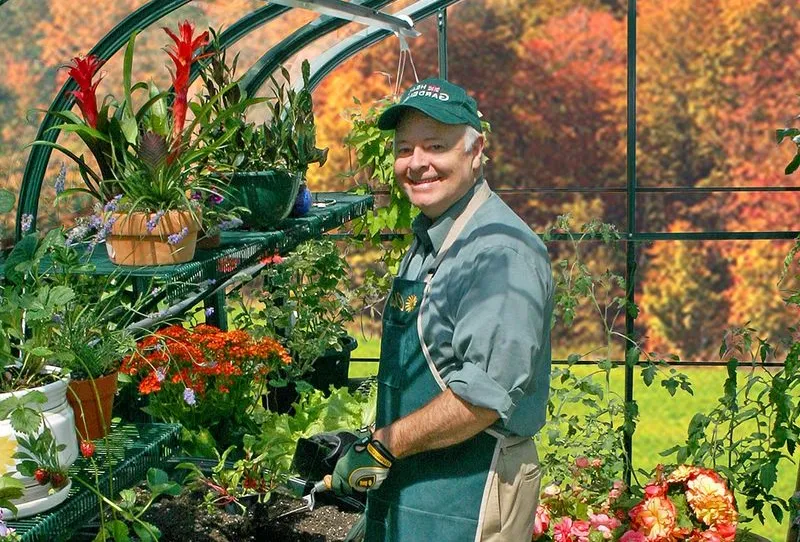7 Early Spring Gardening Projects You Can Start Today
January may be the heart of winter, but it’s the perfect time to lay the groundwork for a productive and rewarding gardening season. By starting now, you’ll be ahead of the curve and ready to enjoy vibrant blooms and bountiful harvests. Whether you have a greenhouse or are working outdoors, here are five projects to kick off your next gardening year.
1. Plan and Prep the Garden Space
Before planting begins, it’s essential to take stock of your garden space. Start by:
- Clearing Debris: Remove any fallen twigs or leftover crops from last season, but leave mulching leaves in plant beds to protect roots from the cold.
- Testing Soil: Pick up a soil testing kit to check pH and nutrient levels. Amend your soil with compost or other nutrients as needed. You’ll be amazed at how much healthier your plants will be when they start off in well-prepared soil.
- Designing Your Layout: Sketch out your planting plan, taking crop rotation into account to maintain soil health. Consider companion planting to maximize space, improve plant health, and provide natural pest control.
- Choosing What to Grow: Decide which plants you want to grow and where they will go. Group plants with similar needs together, such as sun-loving vegetables or shade-tolerant flowers. If you’re growing edibles, think about staggering planting times to ensure a continuous harvest.
For greenhouse growers, use this time to organize and clean your space. Wipe down surfaces, check for pests, and inspect your equipment to ensure everything is in working order. Every small effort now will pay off later.
2. Start Seeds Indoors or in Your Greenhouse
January is a great time to start seeds for cool-season crops and early flowers. Some excellent choices include:
- Leafy greens like lettuce, spinach, and kale
- Root vegetables such as carrots and radishes
- Herbs like parsley, cilantro, and dill
- Early-blooming flowers like pansies and snapdragons
If you have a greenhouse, you can set up seed trays with a controlled environment to encourage germination. No greenhouse? No problem! A sunny windowsill or a grow light setup indoors is a great place to start. Remember to label your seeds and keep them moist, but not waterlogged. It’s easier than you think to grow strong, healthy seedlings with just a little care.
3. Prune Trees and Shrubs
Late winter is the ideal time to prune many fruit trees and ornamental shrubs. Pruning helps shape the plant, remove dead or diseased wood, and promote healthy growth in the spring.
- For Fruit Trees: Focus on apple, pear, and stone fruit trees. Remove any crossed branches, thin out the center for better air circulation, and trim back overly long shoots.
- For Roses and Shrubs: Cut back overgrown or damaged stems to encourage fuller growth.
Always use clean, sharp tools and research specific pruning needs for your plants. Pruning now makes a big difference when spring growth kicks in.
4. Plant Bare-Root Trees and Perennials
January is an excellent time to plant bare-root trees, shrubs, and perennials while they are still dormant. Popular choices include:
- Fruit trees like apples, cherries, and plums
- Berry bushes such as blueberries and raspberries
- Perennials like asparagus, rhubarb, and artichokes
Ensure you soak the roots before planting and choose a sunny, well-drained location. These plants will establish themselves early and reward you with growth once the weather warms. It’s a wonderful way to invest in your garden’s future.
5. Tend to Greenhouse Maintenance
For those with greenhouses, this is the perfect moment to fine-tune your setup:
- Inspect for Damage: Check for cracks or leaks in your greenhouse panels and repair them.
- Clean Polycarbonate Panels: Use a polycarbonate-safe cleaner to gently wash your greenhouse panels. This not only brightens your space and ensures maximum light reaches your plants, it also helps you get the maximum life out of your polycarbonate.
- Organize Tools and Supplies: Arrange pots, trays, and tools for easy access.
- Upgrade Ventilation and Heating: Ensure fans and heaters are functioning correctly to maintain optimal temperatures.
If you don’t have a greenhouse yet, consider starting small with a cold frame or a small greenhouse kit. These options are affordable and perfect for extending your growing season. You’ll love the convenience they offer.
6. Build or Refresh Raised Garden Beds
January is an excellent time to construct new raised beds or refresh the soil in existing ones. Raised beds warm up faster than in-ground beds, allowing for earlier planting in spring. You can:
- Use untreated cedar or other durable materials for a long-lasting frame.
- Top off with fresh soil or compost to replenish nutrients.
- Install hoops or row covers to extend the growing season for cool-season crops.
Raised beds are a game-changer for gardeners who want to maximize their growing space and simplify garden maintenance.
7. Encourage Pollinators with Early Blooms
Start planning and planting flowers that will attract pollinators to your garden. Pollinators are essential for a healthy garden, and providing early blooms can support them as they emerge. Consider:
- Sowing seeds for pollinator-friendly flowers like calendula, borage, or violas.
- Placing small bee hotels or water stations to support bees and butterflies.
- If you have a greenhouse, start early-blooming plants indoors for a head start.
Supporting pollinators now will create a thriving ecosystem that benefits your entire garden.
Get Ahead, Stay Ahead
Gardening is all about timing, and January offers a golden opportunity to get a head start. With these seven projects, you can set the stage for a thriving garden and enjoy the satisfaction of watching your early efforts pay off. So grab your gloves, step outside, and start growing! Every small step now will make springtime even more rewarding.


